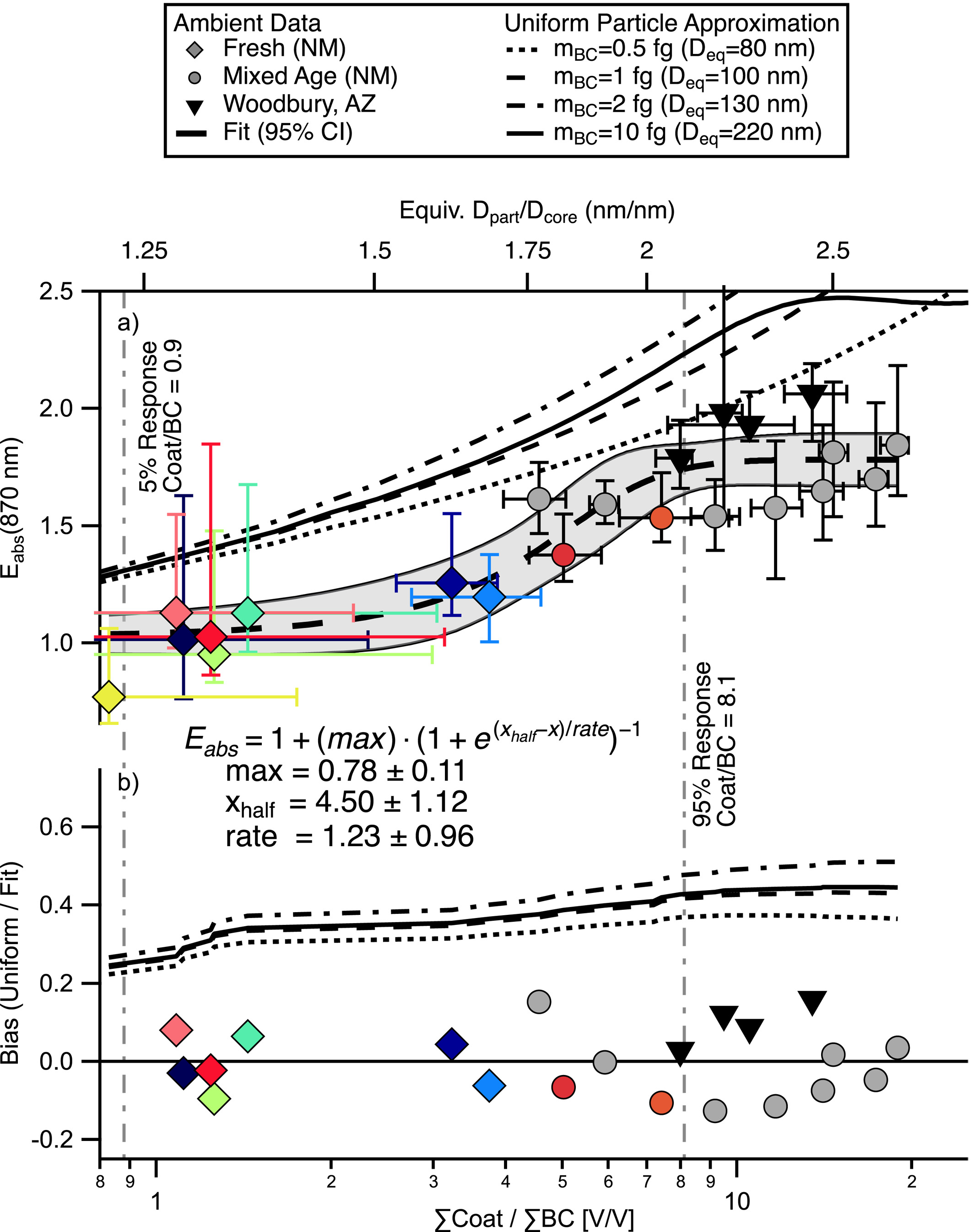Empirical relation predicts significant enhanced absorption by black carbon in wildfire smoke
Submitter
Dubey, Manvendra K.
— Los Alamos National Laboratory
Area of Research
Aerosol Properties
Journal Reference
Lee J, K Gorkowski, A Meyer, K Benedict, A Aiken, and M Dubey. 2022. "Wildfire Smoke Demonstrates Significant and Predictable Black Carbon Light Absorption Enhancements." Geophysical Research Letters, 49(14), e2022GL099334, 10.1029/2022GL099334.
Science

Figure 1. a) Observed Eabs (870 nm) as a function of the plume integrated coating-to-BC volume ratio (ΣCoat/ΣBC). Modeled Eabs are provided for BC over a range of core sizes. A sigmoidal fit to the data with the 5% and 95% response is shown. (b) Bias in currently used uniform-Mie model and observed data relative to our empirical fit. From journal.
Climate models assume large black carbon (BC) absorption enhancements (Eabs) due to organic coatings. We evaluate Eabs with field observations of wildfire smoke to make more robust estimates of the climate forcing.
Impact
We constructed an empirical relationship between absorption by BC and its mixing with organics and other species on aging. We found significant radiative forcing by BC from wildfire smoke that is currently biased high. Our function can be used to accurately estimate wildfire smoke BC radiative forcing in climate models.
Summary
We observed single-particle BC mass and coating (SP2) on 21 fresh to aged smoke plumes to compare with independently measures absorption. Absorption enhancement (Eabs) increased with coating thickness and agrees with our particle absorption model. Coatings were related to smoke age. Eabs was found to be significant, but less than predicted in current models. We constructed an empirical fit to reliably predict Eabs from coating thickness in the U.S. Department of Energy's earth system model (E3SM/MAM4).
Keep up with the Atmospheric Observer
Updates on ARM news, events, and opportunities delivered to your inbox
ARM User Profile
ARM welcomes users from all institutions and nations. A free ARM user account is needed to access ARM data.


















